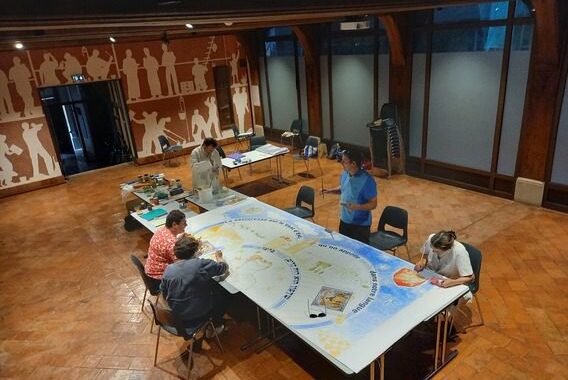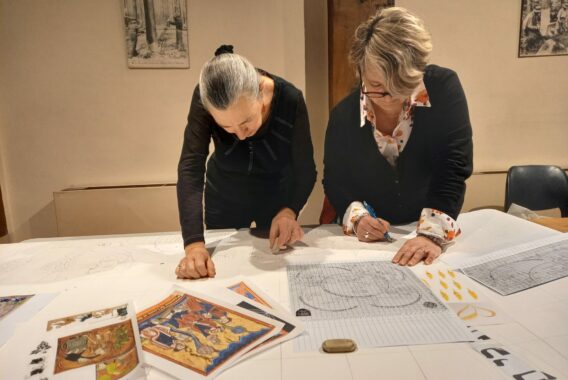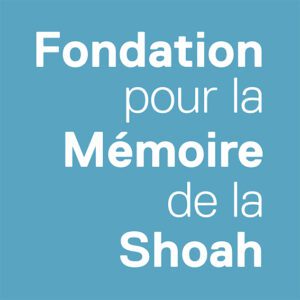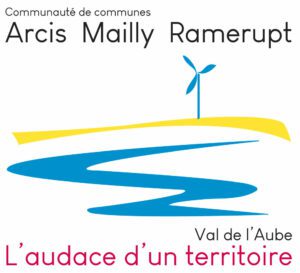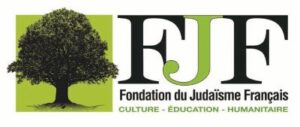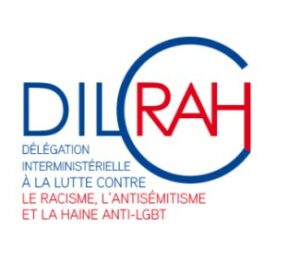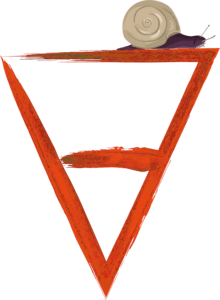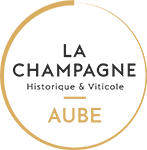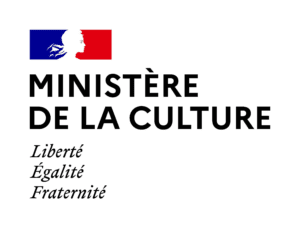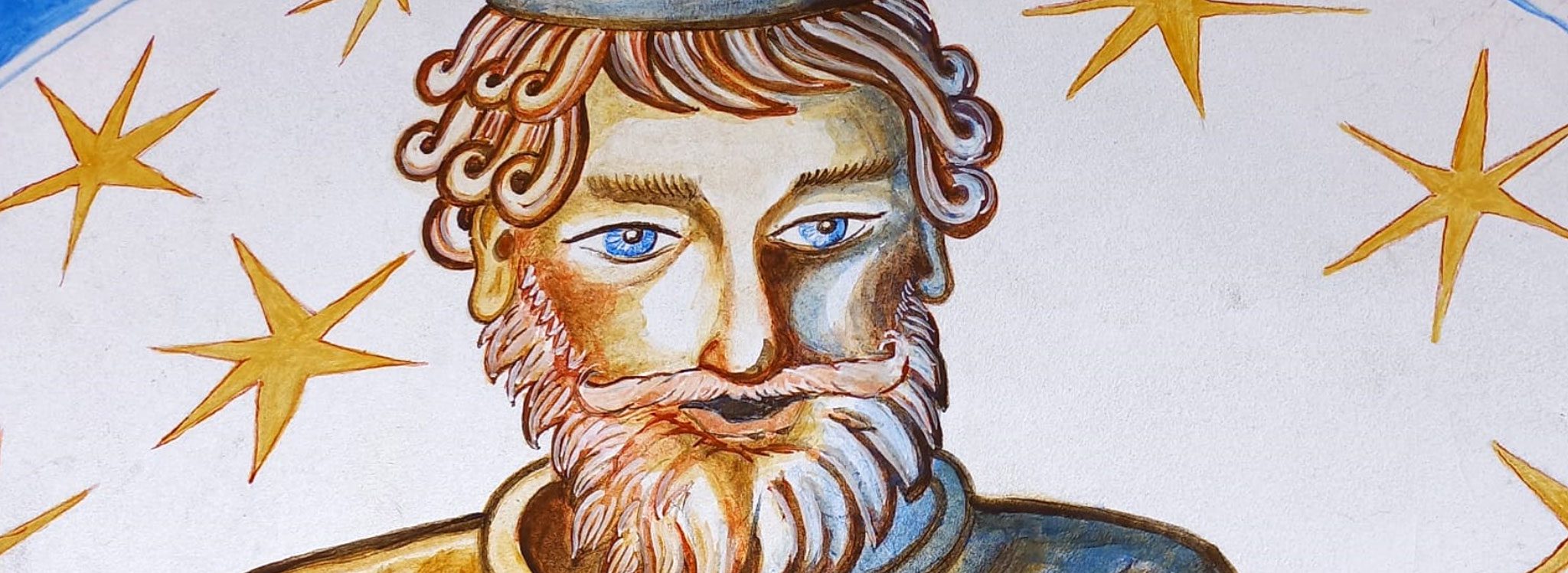
The “Isaac de Dampierre” fresco, created in June 2022, tells the story of Dampierre’s medieval Jewish heritage and highlights the figure of Isaac de Dampierre, a key figure in the history of the Jewish community from the time of the Counts of Champagne in the 12th century.
This fresco is the first of a future slowtourism circuit, which will be extended in 2023 with the creation of two other frescoes in Ramerupt and Lhuître, followed by around twenty others in the villages of Aube. The written word, the fruit of the intellectual work bequeathed to us by the Wise Men of Champagne, is the common thread running through the Fresco Circuit.
With its original conception, this committed initiative puts the spotlight on rural communities through an unexpected collaborative historical, artistic, cultural, tourist and civic project that brings people together around strong values: sharing, intellectual openness, artistic curiosity, the fight against stereotypes, racism and anti-Semitism.
contact : bonjour@aube-champagne.com
What elements make up this fresco?
The medieval Jewish heritage of Champagne is largely intangible. Yet the commentaries of Rashi – a leading figure in medieval Jewish thought – and his disciples, the Tossafists (commentators from the School of Rashi), on the Bible and the Talmud are still studied throughout the world. The study and understanding of sacred texts and their transmission by scholars have left their mark on history.
The “Fresco Trail” project on the Medieval Route of Rachi in Champagne is based on these historical figures embedded in local communities, which provided fertile ground for encounters between Jewish and Christian communities sharing a common daily life. Their creativity was able to flourish, giving rise to writings that remain benchmarks today.
Hebrew meets Champagne, Judaism meets Champagne
To express these everyday, familiar exchanges, each fresco contains a biblical or Talmudic commentary in Hebrew, translated into French. These commentaries include a wealth of accounts of local life at the time.
Medieval French was the mother tongue of the Jews of Champagne. They used Hebrew to study the sacred texts and inserted French words in their commentaries to make them easier for their readers and disciples to understand.
Through their comments, medieval French has crossed borders and centuries to become a major testimony to the beginnings of our language. These words are sometimes the oldest examples of terms transcribed into Old French and appear in many dictionaries.
To illustrate both this transmission of history and language, the commentary chosen for the Dampierre fresco is based on verse 28.22 of Deuteronomy: “… the language of the past, the language of the present and the language of the future”. The Lord will strike you with consumption, hot fever, inflammations of all kinds, dryness and yellowing, which will pursue you until you succumb. ».
This commentary by Rachi describes a situation of drought with the use of the word ct: “The drought is the East Wind, which is called hasle in our language”.hampenois hasle which appears transcribed in Hebrew characters in the text as follows
The translation of the commentary has been adapted from several sources to make it easier to read and understand.
The word hasle, sometimes presented as haslide, has been retained by the scientific committee according to the new edition of Mikraot Gedolot Haketer.
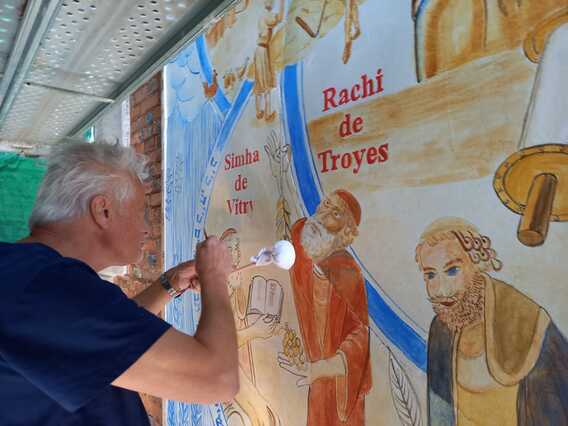
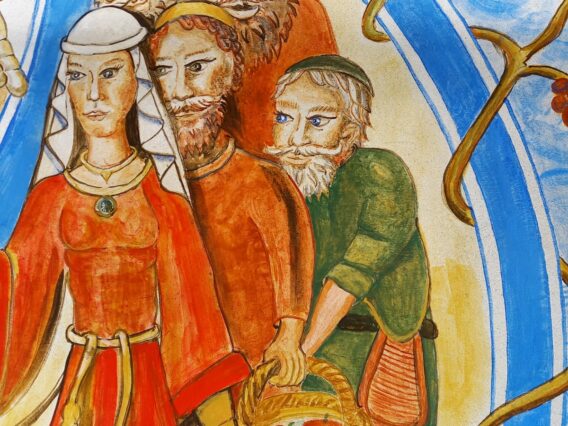
“Drought is the easterly wind we call hasle in our language.”
This commentary confirms the link between everyday medieval life in Champagne – here the fresco depicts work in the fields in the Dampierre region – and the study of the biblical text. A great deal of research has been carried out on Isaac de Dampierre’s commentaries on the Talmud and its responsa, without finding any commentary more explicit than that of Rashi, who is the best witness to this “encounter”.
Who is Isaac de Dampierre?
Isaac de Dampierre (1110/1115 – after 1184, probably around 1189) was a great scholar from Champagne who belonged to the Tossafist school. He is the great-grandson of Rashi (1040-1105) through his mother, Hannah, daughter of Yochebed, one of the famous exegete’s three daughters. Through his father, Samuel, he is the grandson of the no less famous exegete and friend of Rashi, Simha de Vitry (Vitry-en-Perthois, near Vitry-le-François).
Following in the footsteps of his maternal uncles Samuel son of Meir (Rachbam) and Jacob son of Meir (Rabbenu Tam) from Ramerupt, he took up the torch of the School at Dampierre and became an extremely important commentator, regularly quoted by his successors. Throughout his life, he devoted himself to commenting on the Talmud, for which he developed a method of amendment that would survive him. He is also the author of numerous responsa (authoritative epistolary exchanges on issues such as religious practice).
The leader of the Tossafists, he trained many disciples, including his son Elhanan, his intended successor, who died prematurely as a martyr in unknown circumstances in 1184. Samson de Sens was another of his eminent disciples who would become the leader of the Tossafists after him, from the town of Sens. Finally, Samson’s brother Rabbi Isaac son of Abraham and Rabbi Judah of Paris (?-1224), known as Sire Léon de Paris, were among his best disciples. After Samson, Rabbi Judah took up the torch of the Tossafist school in Paris. He is the great-great-great-grandson of Rachi.
Another scholar would go on to become one of Isaac de Dampierre’s pupils, also named Isaac fils d’Acher. To distinguish them, one is called Isaac the Elder and the other Isaac the Younger, a disciple from the Rhineland (Speyer). Isaac the Elder, son of Samuel, is also known as RI, the initials of Rabbi Isaac.
In the fresco, his wife (whose first name is unknown), who is sometimes quoted in his responsa, is shown on his left, accompanied by Isaac de Dampierre’s disciples. She is also the great-great-granddaughter of Rashi, through her eldest daughter Myriam, sister of Yochebed.
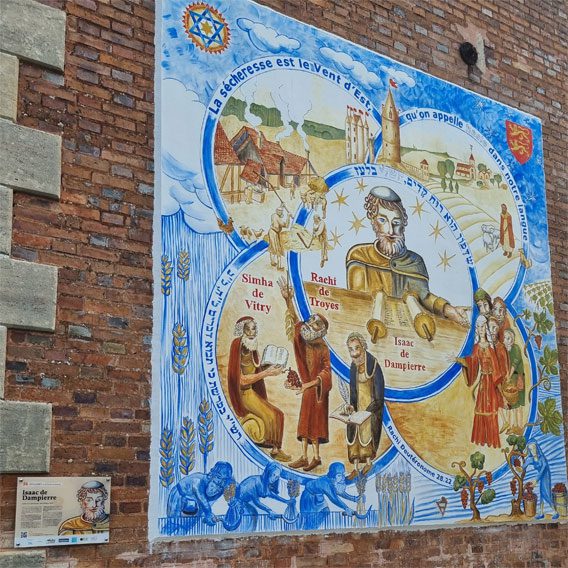
The narrative of the Dampierre fresco
The Dampierre region has a long history of farming, with wheat, vines and livestock. That’s why it was decided to depict these strong symbols of local identity on the fresco.
In the Middle Ages, Dampierre was a seigneury of the county of Champagne. The work depicts the town’s coat of arms in the 12th century.
In the centre stands Isaac de Dampierre studying the Torah. Around him are four powerful images from his life at Dampierre:
- The village of Dampierre, where farmers go about their business
- The castle and church in their medieval form, with a shepherd in front of them to remind us of the shepherds who once roamed the Champagne plain
- To Rabbi Isaac’s right, his two prestigious ancestors, Rachi and Simha de Vitry
- On his left, his disciples and his wife
The five blue circles surrounding the main character represent the five books of the Torah (Pentateuch).
At the foot of the work, the typical crops of the region, vines and wheat, also represent the symbols of the fruits of Israel that appear in the Bible. On the upper band of the work, the Star of David faces the Dampierre coat of arms. Although the star was not in use at the time, these two elements were chosen to symbolise the meeting between Judaism and the land of Champagne. This coat of arms “gules à deux léopards d’or” (two yellow leopards on a red background) has been used in Dampierre since 1224. Two other coats of arms preceded it from the second half of the 12th century, but the scientific committee chose to retain the last one, identified as the historic coat of arms of Dampierre.
Rabbi Isaac took on the face of the artist’s father, who had died the previous year.
The origins of the fresco project
Since 2019, Champagne has been part of the Jewish Heritage Route, a Cultural Itinerary of the Council of Europe, as the cradle of a universally known and recognised intangible heritage. The mission of the Route Médiévale de Rachi en Champagne is to promote the Jewish memory of the department of Aube, a priceless cultural heritage shared by Jews the world over and the historical heritage of a leading region – the former County of Champagne – with national and international influence. However, there are no physical remains of where these communities lived. But the names of their representatives have crossed the centuries and borders and are known worldwide as the “Wise Men of Champagne”. The best-known of these artists lived in Ramerupt and Dampierre, two communes in the Arcis-Mailly-Ramerupt Communauté de Communes (CCAMR) in northern Aube, which explains the location of this first fresco.
The spirit of the fresco project
In the context of intangible heritage, the idea of illustrating the medieval Jewish heritage of Aube through permanent artistic works, free of charge and open to the general public, aims to make this part of local history accessible to the general public and, in addition to discovering the history of Aube, to provide a better understanding of Jewish heritage and culture in an informal way, by combining art and historical heritage in an entertaining way.
In this context, this future slowtourism route makes sense from a tourist and cultural point of view, as well as from the point of view of promoting the region, particularly in areas where tourism is lacking.
The project is free and open to all, locals and tourists alike, with a focus on forgotten local history. By involving local residents, and in particular schoolchildren, in its creation through a number of workshops, he has worked to gain recognition for this major local heritage and to combat anti-Semitism.
The role of the Scientific Council of the Medieval Route of Rashi in Champagne
The narration of the fresco was proposed by CulturistiQ Laboratoire Culturel and supervised by the Scientific Council of the Route médiévale de Rachi en Champagne, made up of a team of excellent researchers:
- Arnaud Baudin, Deputy Director of the Aube Archives and Heritage, Doctor of Medieval History
- Marc-Alain Ouaknin, Rabbi, writer and professor of philosophy and comparative literature at Bar-Ilan University (Israel)
- Pinchas Roth, Professor of Medieval Jewish History, Talmud Department, Bar Ilan University, specialist in Isaac de Dampierre
- Danièle Sansy, Senior Lecturer in Medieval History at the University of Le Havre Normandie
The team was assisted from time to time by Judith Kogel, Director of Research at the IRHT (Institut de Recherche et d’Histoire des Textes), and Professors Rami Reiner (Ben Gourion University) and Claire Soussen (Université Boulogne Côte d’Opale and Director of the Nouvelle Gallia Judaica).
The members of the working group approved the narrative proposed by the Route médiévale de Rachi en Champagne on the theme of the “Memory of the Sages of Champagne”, which was based on a meeting between medieval Champagne symbolism and the symbolism of local Jewish heritage and history. The Scientific Advisory Board’s expertise was particularly sought to ensure the consistency of the historical details and symbolism, as well as to validate the linguistic choices made in the fresco.
The Dampierre fresco. Art meets history
The model for the Dampierre fresco was created by local artist Jean-Philippe LEDIT. It won a call for artistic projects launched in October 2021 by the Arcis-Mailly-Ramerupt Community of Communes. His compositional choices were guided by precise specifications.
Jean-Philippe LEDIT, an artist and mason specialising in historic monuments, trained in fresco in 2016 in Troyes (with Jean-Jacques JOLINON) and in 2017 in Paris, at ESAA Duperré (with Isabelle BONZOM). After working on a number of projects with Passeurs de Fresques, he created two models of the frescoes on the Chemin des Viennes in the greater Trojan area, each measuring around 10m². As part of two Erasmus+ projects, he also supervised the creation of a fresco in Amiens with Japanese architect Kinya MARUYAMA and 12 young Europeans, a 15m² fresco in June 2021, and in September 2021, the creation of a 45m2 fresco in the historic Polish town of Opole.
Jean-Philippe Ledit also runs workshops to introduce schools to frescoes on bricks or tiles, supervising the work of young people on facades such as the Collège de la Villeneuve (Saint-André-les-Vergers), the Lycée Val Moré (Bar-sur-Seine) and the Collège Max Hutin (Bouilly), as well as the Viennes mini-fresco trail.
La fresque a été réalisée par l’association auboise “Les Passeurs de fresques”. The volunteers use this ancient art, which is a painting technique on fresh plaster made from air lime and river sand. The colours used are natural pigments, compatible with lime, simply diluted in water.
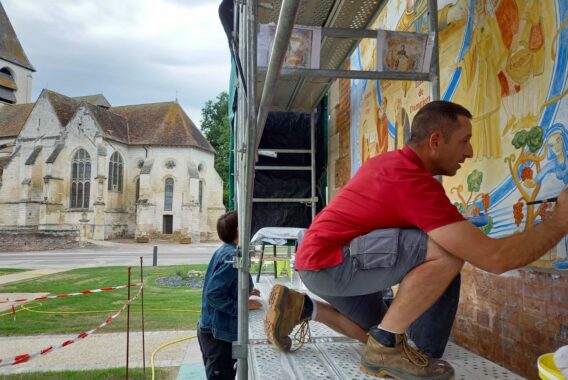
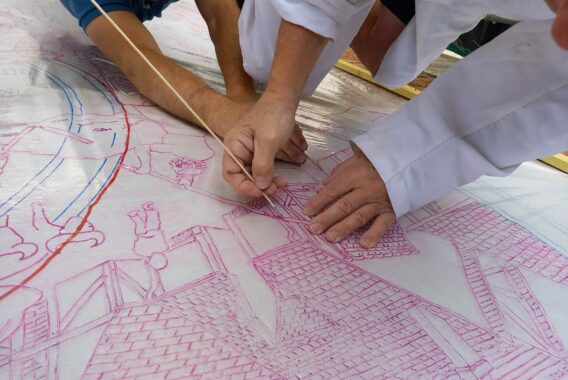
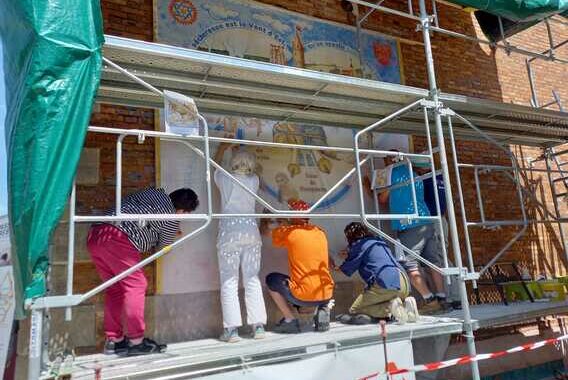
How is a fresco created?
Once the artist has produced a model of the fresco, the fresco artists enlarge it to scale. The plastic tracing paper used for this operation is then placed on the previously prepared wall and used to apply the line and then the desired pigments. An operation on a site such as the Dampierre fresco requires five full days of work on site, not including the preliminary work of enlarging the model and choosing the colours.
For more information: http://lespasseursdefresques.fr/
The Dampierre fresco project
The villages of Ramerupt and Dampierre are known to Talmudists from all over the world because of the influence of the School of Rashi in the 12th century. urceFrançais From a historical point of view, many accounts of key figures, their activities and their daily lives can be consulted and used in their comments and responsa. This puts these two communes ahead of the 25 others in the former county of Champagne that were home to medieval Jewish communities, as major sites of French Judaism. The commune of Dampierre has shown a keen interest in promoting its medieval heritage and has applied to create the first fresco on the future circuit.
Lime is a living material that adapts better to a healthy brick wall. The working group felt that the Town Hall’s solution met these criteria. The choice of a large-scale fresco (3 metres by 3 metres), visible free of charge from the public highway, was unanimously approved.
In preparation for the fresco, the local authority has created landscaping in front of the municipal building in spring 2022. Around ten volunteers were needed to create the fresco in situ. The fresco artists were provided with accommodation by the local council for the duration of the project. The works took place from 30 May to 3 June 2022. Once two coats of lime had been applied, work began on transferring the design and then colouring the work, using scaffolding erected by the local council.
Project partners
The project attracted the attention of public and private institutions, which supported the creation of the fresco.
Through the Idées 2021 competition organised by the Aube departmental tourism agency and the support of the Aube departmental council, the commitment of the Fondation pour la Mémoire de la Shoah, the Fondation du Judaïsme Français and the DILCRAH is indicative of the project’s historical, civic and educational recognition.

